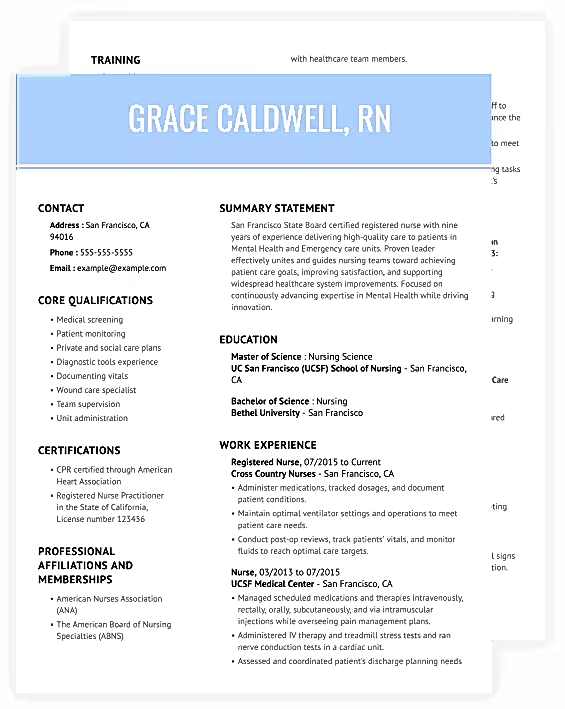What Is a CV Format?
A CV, short for curriculum vitae, is a document outlining your professional qualifications. CVs show your work experience, education, skills, interests, and other things that might convince the hiring manager you’re the perfect fit for the job or academic position, much like a resume.
Why a CV format matters
A “CV’s format” refers to the order of its parts and organization.
Your CV’s format determines whether or not your document will make it pass an applicant tracking system (ATS). Many companies use ATS to prescreen candidates to see if they’re qualified for a job. So, you must nail your CV format in order to win the job!
Read on to learn the following:
TABLE OF CONTENTS
If you want your CV format handled for you, check out our CV Builder. It’s an incredible automated tool that can make you an ATS-friendly CV in under 15 minutes!
How to Format a CV
Here’s a checklist for how you should format your CV:
- Set one-inch margins on all sides of your CV.
- Use 1.0 or 1.15 line and paragraph spacing.
- Pick a good font for a CV that is easy to read and a size of 11-12.
- Add your contact details in the header.
- Divide your CV into clearly labeled sections, using a larger font size and/or bold.
- Add one paragraph space before and after each heading
Follow the steps above, and your CV will be much easier to read and more likely to pass the scan of applicant tracking systems (ATS).
Moreover, 98% of Fortune 500 companies use ATS to prescreen resumes. As AI advances modern recruitment methods, many other industries are also getting on board with this automation.
That means a human may only see your CV if it passes the ATS!
The Best CV Format for You:
Skills-Based Vs. Chronological
There are two main CV formats: chronological format CV or skills-based (functional).
The most common CV format is the chronological CV. That’s where work experience lives higher up on your CV so that it gets the most focus and attention. It’s better for seasoned job seekers who have 10+ years of experience.
For those with little experience, a functional format is better! This type of format emphasizes your skills rather than your work experience.
Here’s a chart that breaks it down:

Now, when it comes to the file format of a CV — to send it to employers — your best bet is a PDF or Word document.
Those are the most popular file formats for CVs! Be sure to read the job post or ad and submit your CV in the file format requested by the employer.
Key Takeaways: CV Format Tips
For an easy recap, here’s how to get the perfect CV format:
- Make your CV easy to read using a professional font, proper margins and clear headings.
- Consider using a CV template if you want a preformatted document.
- Match the style of your CV to the culture of the organization you’re applying to.
- Find 25+ preformatted CV templates in our CV Builder!
CV Format FAQ
What is the best CV format?
The best CV format puts your top skills and qualifications towards the top of your document so they’re sure to get noticed!
Avoid hiding your most significant achievements on the second or third page of your CV; they may never get seen by the hiring manager.
How do I make a CV format in your CV Builder?
Our builder can help you with all your CV formatting needs by giving you many customization options and tools!
Follow these steps to format a CV in our builder:
- Click the “Create My CV” button. On the appearing page, select “Create a New Resume” to begin. Follow the prompts. The builder will guide you through creating the summary adding your work history, skills and education.
- To add extra sections: After writing your resume summary, click the box next to the section(s) you want to add to your CV or click “Add Your Own” to type a section not on the menu manually.
- To reorder sections: When you finish, you’ll see your CV. Go over any section with the mouse to select it; an arrow icon will appear on your right. Click it to reorder sections by moving the selected area elsewhere on your CV.
- To change the names of any of your CV sections: Hover over the section title “Summary,” “Education,” etc., until the “Rename” button appears. Then, put your new title in the space provided and click “Enter.”
- To change your CV’s formatting: Use the menu at the bottom of the page. Click the arrow next to “Normal” and press the “Custom” button. A new menu will appear, where you can adjust the margins, font size, font style, and spacing. To change the color, a menu with different options will appear when you click the “Color” tab.
- To finalize your CV: Click “Spell Check” at the top left to ensure no grammatical errors.
- To save in any CV format: Once satisfied with your CV, click “Download” and save the document as a PDF, Word Doc or SVG file. If you don’t want to download it yet, press “Save and Next” so your work isn’t lost.
Is a CV right for me?
Internationally, CVs are used to apply for most jobs.
- Professors and other academics
- Scientists and researchers
- Medical professionals
- Executives
- Specific jobs in entertainment, travel, library sciences, engineering, military, architecture, publishing and government work
Internationally, CVs are used to apply for most jobs.
How long should my CV be?
A standard CV can be anywhere from 2-to-10 pages depending on your industry, supplementary information, and what the employer or job posting has requested.
The most important thing for your CV is to showcase your full career profile and background through relevant experiences in and out of the workplace.
Should graphics be used in a CV?
It depends. Graphics and photos may be required on your CV, especially if you are in sales, the arts, an actor or a model.
In some European countries, the UK and the U.S., a ‘no-frills’ CV is preferred, so photos should not be included unless specifically requested.
What countries widely use CVs?
CVs are applicable for a variety of jobs in most countries. The top countries where CVs are the main form of job application are: the UK, New Zealand, Germany, France, India, Italy, the United Arab Emirates, Portugal, Chile and the Netherlands.
How We Reviewed This Article
Over the past 15 years, we’ve helped more than 10 million job seekers build stronger cover letters, discover their career paths, interview confidently, and boost their chances of finding the right job faster. Review our Editorial Policy to learn more about our process.
Related content
As seen in*
*The names and logos of the companies referred to in this page are all trademarks of their respective holders. Unless specifically stated otherwise, such references are not intended to imply any affiliation or association with LiveCareer.









